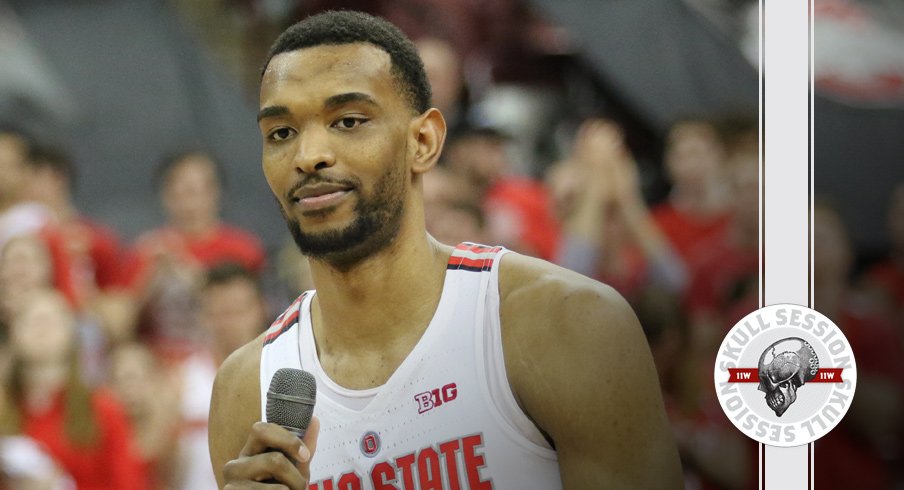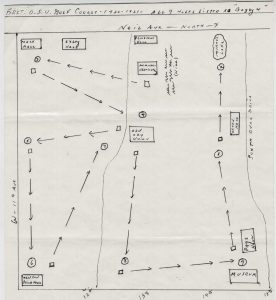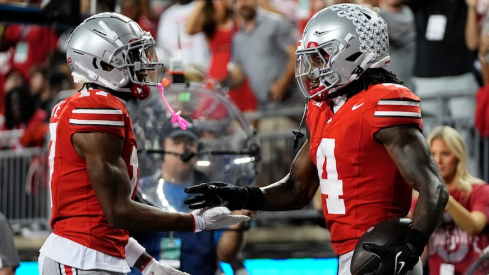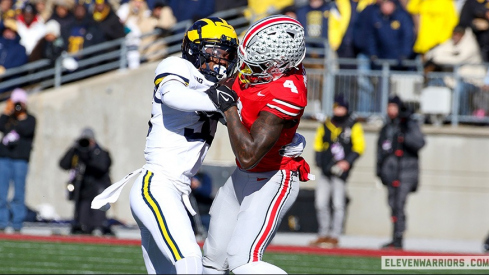I try not to complain about Ohio weather. It's akin to complaining about the refs while your team is losing.
But three blizzards and two sunny, 50-degree days passed through Piqua yesterday. It ain't right! March is for temperatures only higher than 40 degrees.
ICYMI:
- Latest depth chart projection from LeDan Hope.
- The men's basketball team provides Buckeye fans with an increasingly rare underdog story.
- Thad Matta will reportedly decide by the end of this morning if he'll be the next coach at Gerogia.
- Looking at who could be next to board the Offseason Hype Train.
- 70-car pileup on 71 can't keep Wrestlebucks from Cleveland.
- Nate Ebner reportedly re-ups with the Patriots on a two-year deal.
- The Cleveland Browns will reportedly sign Carlos Hyde later today.
- Brian Golsby convicted on all counts in the rape and murder of former Ohio State senior Reagan Tokes.
- Reserve your (or your business’) spot next to the life-size statue of Woody Hayes coming to Newcomerstown!
Word of the Day: Otiose.
BROTHER'S KEEPER. The resurgence of Keita Bates-Diop will lead to an NBA payday in the near future. For Bates-Diop, however, the motivation to excel at basketball comes from a deeper motivation than money.
Bates-Diop plays because his brother Kai can't.
From cleveland.com:
Keita's realized that potential, his resurgent play this season leading to a Big Ten Player of the Year award after posting 19.4 points and 8.8 rebounds per game, and leaving many to wonder if he's the kind of star that can carry the Buckeyes to something meaningful in their first NCAA Tournament appearance in three years.
Kai will never play competitive basketball again, the previously undetected heart issue that led to his collapse on Feb. 9, 2017, ending a promising career and forcing Keita to play for two people.
"We talked about that as a family early on," Wilma Bates told cleveland.com last month. "We all know that it's just there. If you've watched Keita for any length of time, you know he's not the most demonstrative player, and he's not one of those kids who's gonna point to the sky or say his brother's name whenever he makes a shot. But he's playing with a quiet confidence, and he is playing because his brother can't."
This is the kind of which Final Four runs are made, though I realize the likely destiny of the team is a second-round ouster at the hands of Gonzaga.
As long as KBD stays hot, the Buckeyes have a chance. With him playing for his brother and an NBA payday, that's a recipe with which no opposing coach will want to reckon.
THE BUCKEYE CONNECTION. The Carolina Panthers seem to no longer want the support of Buckeye Kingdom after cutting ties with Kurt Coleman and Andrew Norwell.
Coleman, for his part, landed in New Orleans in no small part due to their rostering of Ted Ginn, Michael Thomas, Vonn Bell, and Marshon Lattimore.
From nola.com:
The veteran safety met with the New Orleans Saints, Cincinnati Bengals and New York Giants at the NFL Scouting Combine, but a sit-down with the Saints sealed the deal in Indianapolis.
"One of the most important factors was when I met with the Saints and (head coach) Sean (Payton)," Coleman said during a Tuesday morning (March 13) teleconference. "He gave me a great vision of how he saw me fitting within this team, within the defense.
"And playing alongside with several guys that I played with or that I know through the Ohio State connection, it's fun, it's exciting, it's intriguing for me."
[...]
"I've been a great cover safety, but also playing in different types of coverages - quarters, halves and the post," Coleman said. "Moving me around, I think, allows me to keep the quarterback kind of on his toes and allows me to play at the best of my ability."
Props to Coleman for lasting this long in the NFL. (He'll enter his ninth season this fall.) That's not bad at all for a 5-10 guy drafted in the seventh round.
Secondary props to the New Orleans Saints for recognizing what's real. I'm going to New Orleans next weekend for the first time. I can't promise the Browns I won't return as a fulltime Saints fan if I survive 100 hours in the thunderdome.
NORWELL PAYDAY THRILLS FORMER COACH. Urban Meyer demands an offensive-line driven program. He certainly didn't inherit one when he took the reins in late 2011.
Meyer, Ed Warinner, and former offensive lineman Kirk Barton got the offensive line stepping right in quick fashion. Andrew Norwell, one of their first protégés, will reportedly become the highest-paid NFL offensive lineman when free agency begins at 4 p.m. this afternoon.
From Tim May of The Columbus Dispatch:
Barton had blanched when Norwell went undrafted in 2014 but rejoiced when, after Norwell signed a free-agent contract with the Carolina Panthers that year, he emerged as one game’s elite left guards.
“I feel pure happiness for him,” said Barton, now an insurance broker. “The kid was never handed anything. He had to earn everything. He wasn’t invited to the combine. His first signing bonus (with Carolina) was, I think, $3,000.
“To see a kid like that work that hard, to have that kind of mental toughness to persevere and make it, and become one of the top two guards in the league, it’s amazing.”
Not invited to the combine! Absurd.
That wouldn't happen if Norwell declared this year. The NFL has learned to give Meyer the benefit of the doubt.
GOLF NEAR CAMPUS. Golf is a pagan game I don't respect, though a lot of my readers do. As such, I pass along a woebegone time in Ohio State history when students and faculty could play a quick nine holes a block off campus:
From the Ohio State Archives:
A committee of three professors, Alonzo H. Tuttle, John W. Wilce, and Joseph S. Myers joined together to form the first Ohio State University Golf Club in 1919. The push for a new course became even stronger, as faculty and students could join the group for just two dollars. If a course were built, faculty could play Mondays, Wednesdays, and Fridays for two hours and 45 minutes, or 4:45 p.m. until 7:30 p.m.; students were permitted to play every Tuesday and Thursday. Only serious players were permitted, as they had a strict “no practice” policy during these days.
The new University Golf Course opened on Saturday, June 26, 1920. Described in the Lantern as “in excellent condition” and “a wonderful opportunity for members of the faculty and students to participate in wholesome recreation,” the finished product had nine holes in total (as opposed to its initially proposed five holes) and a distance of 1,911 yards. Unfortunately, there is no information that describes the physical construction of the course, although the task was completed and overseen by Tony Aquila, the caretaker of Ohio Field.
Thankfully cooler heads prevailed and a syndicate of speakeasies soon replaced the links (or so I hope).
THOSE WMDs. How to be a great fight movie villain... Big Sugar vs. your body... National Geographic confronts its past... The story of a weird world I was warned never to tell... The highly unusual company behind Sriracha... How Lego became the Apple of toys.



